Calendar
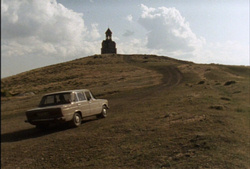 The church is stunning – exotic and alluring – even though she remains distant.
The church is stunning – exotic and alluring – even though she remains distant.
Perhaps she draws you because she is far away; in her lack of discernible detail, she remains open to the imagination.
She stands atop a barren, brown-gold hill, and you hear birds chirping and bells whose sound doesn’t linger.
She will be Miss January. You’re satisfied with the framing and the light and the clouds, as they give this relatively modest building an ethereal but fleeting majesty.
And then: a car. The vehicle has no respect for the scene, or the inherent beauty of the building, or the captured beauty of this moment in time, or the created beauty of your photographic composition.
It comes from behind, crosses in front of you, and travels up the hill with a grating buzz. There seems to be a direct path to the church, but the car takes a detour, prolonging your agony. At the top of the hill, two people get out of the automobile, and their smallness makes the house of worship appear bigger. From this distance, they even seem to join together into a single being, until they disappear into the building.
You remain far below them, fixated on Miss January.
Or do you just not care?
This patient opening shot is a deft encapsulation of Atom Egoyan’s paean to austerity, the 1993 movie Calendar. The film is defiantly muted and cool, and probably the best way to introduce Egoyan’s oeuvre outside of his biggest commercial success, The Sweet Hereafter.
In Calendar, the writer/director offers a film version of musical minimalism, with its emphasis on long shots, repetition, and minor variation, and with just a handful of camera setups. Nothing is superfluous.
Many people will find this tedious, and the good news is that if you’re bored by the first shot, you’re going to be bored by the movie. You needn’t waste your time with the remainder.
But for me, Calendar stands as Egoyan’s masterpiece, a lean, elegant, rigorously composed snapshot of a relationship allowed to deteriorate. The audience will soon learn that the primary character, played by Egoyan himself, is behind the camera that frames the opening shot. His wife (Arsinée Khanjian, the director’s real-life spouse) is in the car with their guide.
She acts as an intermediary between these two men and their cultures. The Armenian guide is interested in history, in stories, and in context, while the Canadian photographer has stripped the buildings of everything but their external beauty. More than a language barrier separates them.
Beyond that, I’ll say little about Calendar’s particulars, because like all the director’s movies, the viewer is an active participant. Egoyan offers disconnected fragments at the outset with the goal of engaging and confusing, and asks the audience to re-assemble the story from its scattered components.
That doesn’t make Calendar (or any other Egoyan movie, for that matter) arbitrary in its structure. On the contrary, breaking a movie apart allows the filmmaker to play with its rhythms and themes, and to organize it more meaningfully. (Consider, as exemplary, the simple parallel structure of The Godfather Part II. On the negative side, see 21 Grams for a deconstruction in love with itself rather than advancing a narrative goal.)
The best support for Egoyan’s choices can be found in this rich but seemingly inert opening, which (1) serves as a concise introduction to the movie’s (in)action, themes, and motifs; (2) summarizes the protagonist simply by adopting his point of view; (3) uses an unbroken, nearly static shot to acclimate the audience to the film’s form, tone, and pace; (4) subtly filters experience through a camera, thus foreshadowing other forms of mediated reality; and (5) in retrospect, uses that camera to allow for readings of the film beyond the personal story at the center.
And that leads to one of the movie’s curious effects. With Egoyan playing the photographer – and with the still and movie cameras at times being indistinguishable from one another – Calendar becomes a commentary on visual aesthetics generally and the work of this director particularly. It’s not much of a leap from the photographer’s obsession with the perfect image to Egoyan’s meticulous film constructions, and both could rightfully be accused of frigidity. Is it possible that Egoyan made Calendar in part as a critique of himself? In its chilly, perfect way, is the movie revelatory about Egoyan’s inner life? Did the movie serve as a transition from his fixation on media to the studies of grief in Exotica and The Sweet Hereafter?
For all its formal discipline, narrative coyness, and intellectual concerns, Calendar’s biggest triumph is that it’s a surprisingly human and humane work. Egoyan still keeps everything at an arm’s length, but he seems to have an emotional investment. After the movie is finished, we consider that opening shot, and Egoyan appears to pause with a question that’s also on the mind of the audience: A normal person would follow his wife up the hill, so why does his photographer remain behind his camera?
Calendar doesn’t pretend to answer the question, but it’s haunted by it.

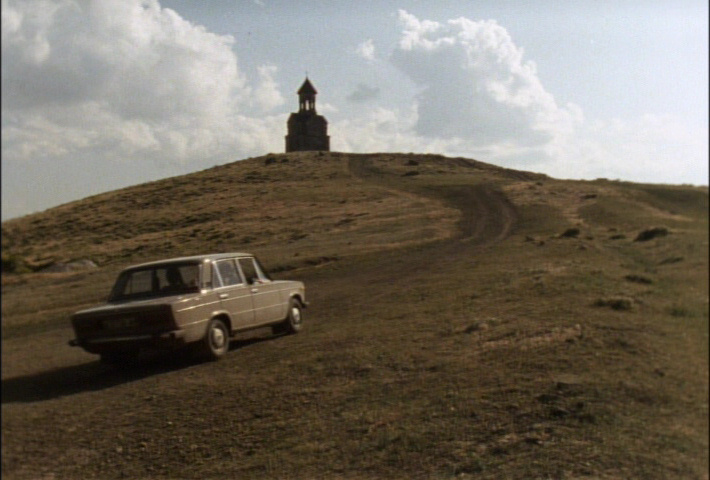
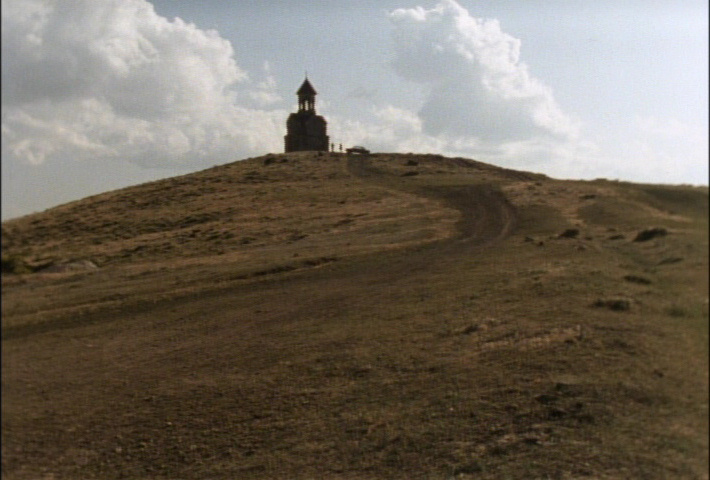
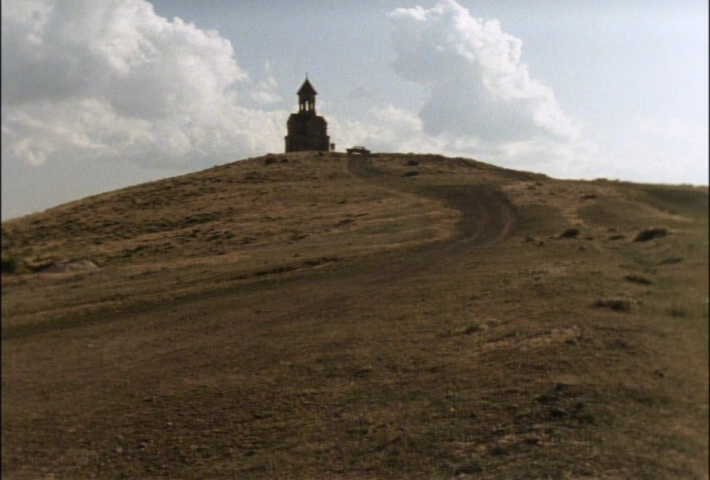
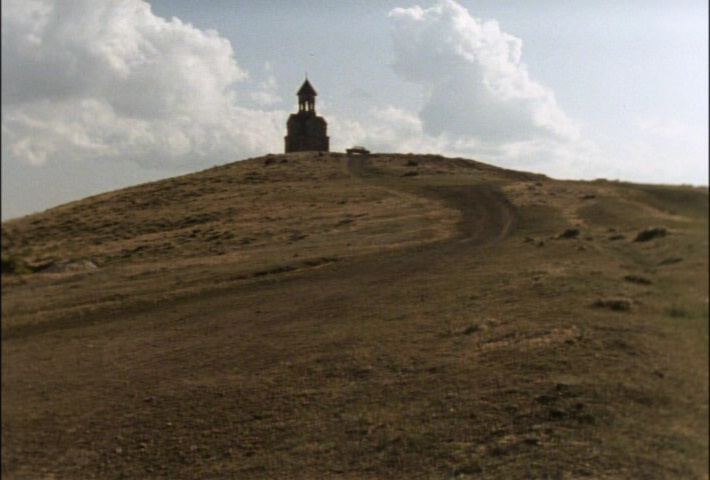
This essay was inspired by Jim Emerson’s Opening Shots project.
I’ve also submitted it to Girish’s Avant-Garde Blog-A-Thon. (For all the participants in the event, check out the links here.) I’m skeptical that Calendar qualifies as avant-garde, but it does seem to fit this definition nicely.


Nice one. Calendar is my fave Egoyan too. And thanks for the Camper link.
Credit where due: I found the Camper link in this comment to Girish’s original proposal for the Avant-Garde Blog-A-Thon.
I love how this post starts out. The writing pulls me right in. Yet again, another film I’ve never seen by a director I know little of. All the more reason to be glad for this most informative of blogathons.